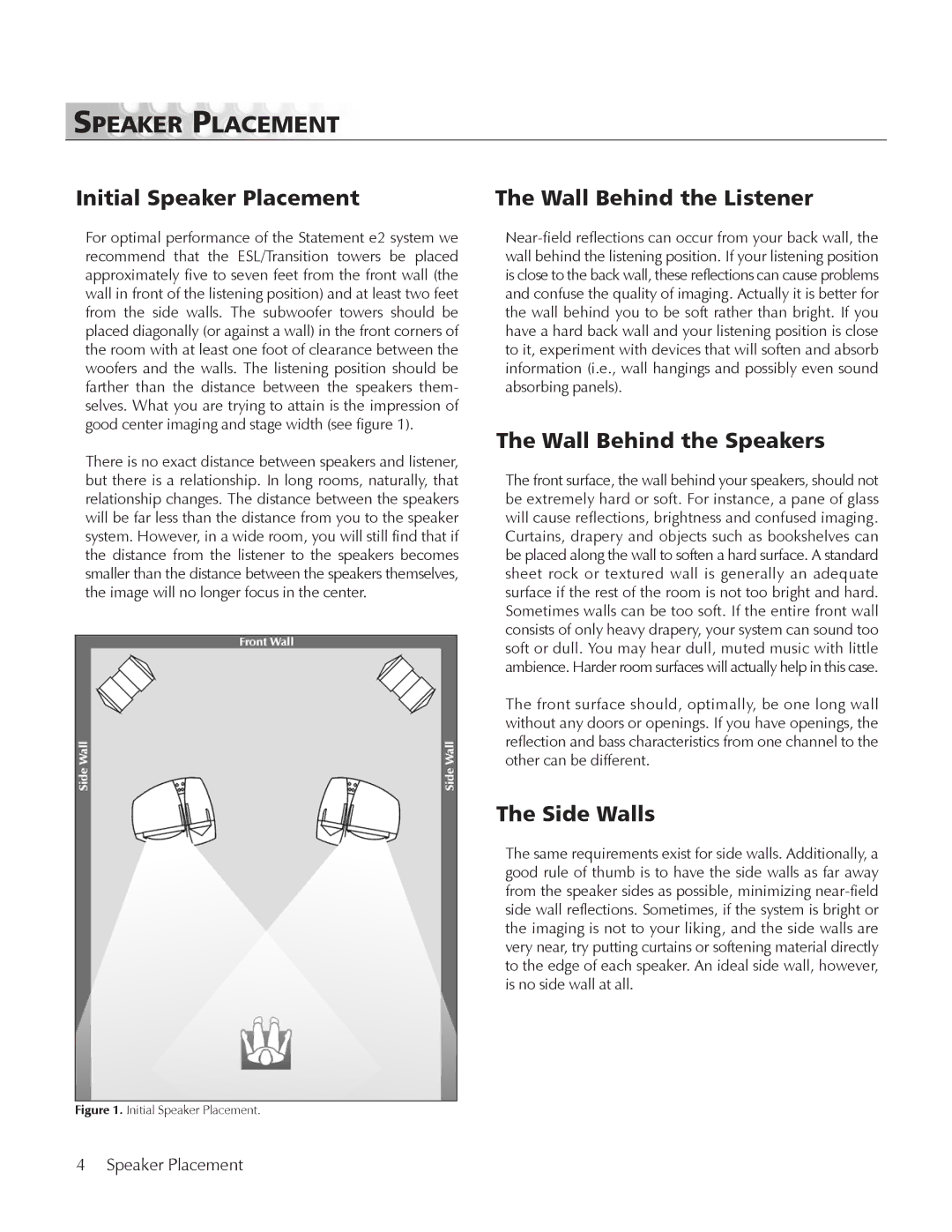
SPEAKER PLACEMENT
Initial Speaker Placement
For optimal performance of the Statement e2 system we recommend that the ESL/Transition towers be placed approximately five to seven feet from the front wall (the wall in front of the listening position) and at least two feet from the side walls. The subwoofer towers should be placed diagonally (or against a wall) in the front corners of the room with at least one foot of clearance between the woofers and the walls. The listening position should be farther than the distance between the speakers them- selves. What you are trying to attain is the impression of good center imaging and stage width (see figure 1).
There is no exact distance between speakers and listener, but there is a relationship. In long rooms, naturally, that relationship changes. The distance between the speakers will be far less than the distance from you to the speaker system. However, in a wide room, you will still find that if the distance from the listener to the speakers becomes smaller than the distance between the speakers themselves, the image will no longer focus in the center.
The Wall Behind the Listener
The Wall Behind the Speakers
The front surface, the wall behind your speakers, should not be extremely hard or soft. For instance, a pane of glass will cause reflections, brightness and confused imaging. Curtains, drapery and objects such as bookshelves can be placed along the wall to soften a hard surface. A standard sheet rock or textured wall is generally an adequate surface if the rest of the room is not too bright and hard. Sometimes walls can be too soft. If the entire front wall consists of only heavy drapery, your system can sound too soft or dull. You may hear dull, muted music with little ambience. Harder room surfaces will actually help in this case.
The front surface should, optimally, be one long wall without any doors or openings. If you have openings, the reflection and bass characteristics from one channel to the other can be different.
The Side Walls
The same requirements exist for side walls. Additionally, a good rule of thumb is to have the side walls as far away from the speaker sides as possible, minimizing
Figure 1. Initial Speaker Placement.
4 Speaker Placement
